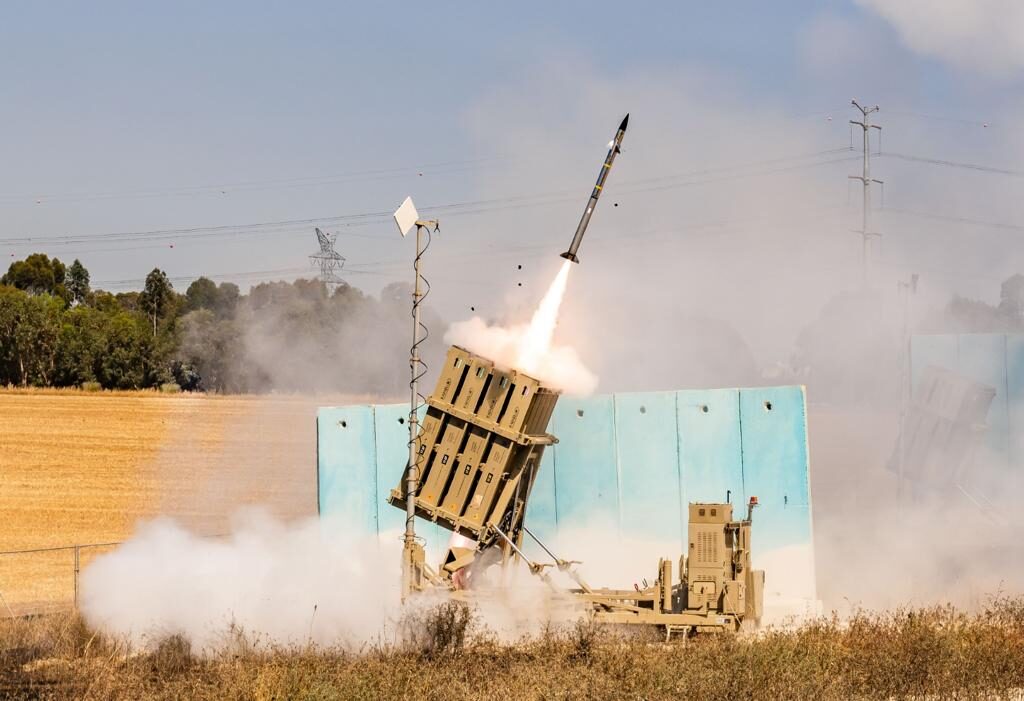
Iron Dome fires Credit: IDF
TEL AVIV: The performance of the Israeli Iron Dome air defense system in the Gaza clashes that ended in a ceasefire May 20 has sparked talks between Israel and US about buying more of the missile defense system for the U.S Army, Israeli defense sources here say.
“The fact that the Iron Dome intercepted big salvos of rockets launched from Gaza as well as armed drones is already creating big interest in the channels between the Israeli and the American defense ministries,” a defense source told BD.
Also, President Joe Biden announced yesterday that the U.S will help Israel renew its arsenal of Iron Dome Interceptors. The US, in effect, will replace the large number of interceptors used by Israel.
Updated data shows that about 3,000 of the rockets fired in the current operation penetrated Israeli territory until the cease fire, which went into effect on May 20 at 2 AM Israeli time. The system’s ability to discriminate between threats headed towards a populated area — which it intercepts with a high rate of success — and those that will fall into the sea or open fields — which it doesn’t bother to shoot at — reduces costs and limits unnecessary interceptor launches. A single battery can protect a medium-sized city.
The rest of the rockets landed within the Gaza Strip. Of the 3,000 missiles that penetrated Israel, more than 1,500 were supposed to fall in populated areas. (Remember, Iron Dome does not try to intercept missiles projected to fall in unpopulated areas). A summary of all the data shows that out of the 1,500 on their way to populated areas, the Iron Dome system intercepted 1,428 missiles for a 95 percent kill rate.
CREDIT: IDF
Raytheon, the American partner of Rafael, manufactures subsystems for the Iron Dome in 15 states. These are currently sent to Rafael’s main facility in Israel for final assembly. Rafael and Raytheon Technologies signed a joint venture agreement in May 2020 to produce Iron Dome interceptors and launchers in a facility in the US. The partnership is called Raytheon Rafael Area Protection Systems (R2S).
Iron Dome was first fired a decade ago. Its development began in December 2007, and it was completed in less than three years.
Since then, Iron Dome has played an instrumental role in every Israeli conflict, stopping thousands of warheads from striking Israel. It’s designed to defeat Very Short Range (VSHORAD), as well as rocket, artillery and mortar (C-RAM) threats, aircraft, helicopters, drones, PGMs and cruise missiles.
In August 2019, Israel’s Ministry of Defense and the US Defense Department signed an agreement for the purchase of two Iron Dome batteries for the US Army. Both batteries have now been delivered to the US. The service has been reluctant to acquire more, citing difficulties integrating the Israeli technology to American command-and-control systems, but Iron Dome has strong support in Congress.
Army wraps up FLRAA PDR, incorporating special ops design changes
According to a SOCOM official, the Army included feedback from the command that led to design changes like hardware for a refueling probe and features that will enable special operators to make unique modifications.



























